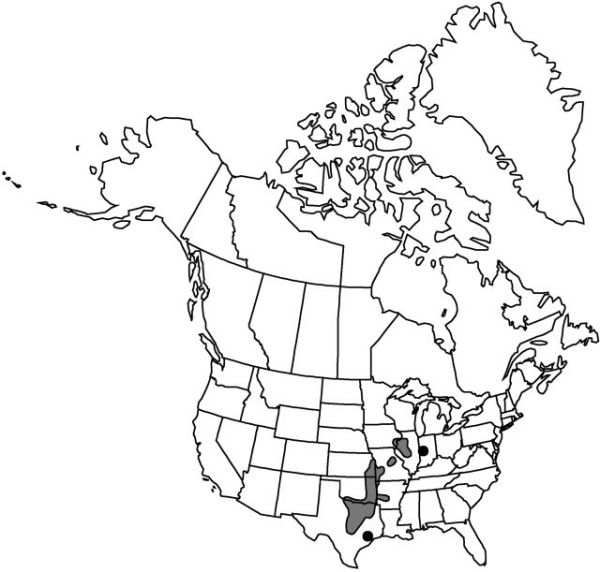Camassia angusta
Rep. (Annual) Missouri Bot. Gard. 18: 195. 1907.
Common names: Prairie camas
Basionym: Scilla angusta Engelmann & A. Gray Boston J. Nat. Hist. 5: 237. 1845
Synonyms: Camassia fraseri var. angusta (Engelmann & A. Gray) Torrey Quamasia angusta (Engelmann & A. Gray) Piper
Treatment appears in FNA Volume 26. Mentioned on page 307.
Revision as of 21:43, 16 December 2019 by FNA>Volume Importer
Bulbs sometimes clustered, globose, 1–3 cm diam. Leaves 3–11, 2–6 dm × 5–20 mm. Inflorescences 27–87 cm; sterile bracts 3–19(–28), bracts subtending flowers shorter than or equaling pedicel. Flowers actinomorphic; tepals withering separately, sometimes connivent over capsules, light blue to lavender, each 3- or 5-veined, 6–10 × 2.2–3.6 mm; anthers bright yellow, 1.5–2 mm; fruiting pedicel incurving-erect, 6–12 mm. Capsules deciduous, pale green to light brown, ovoid-ellipsoid, 6–10 mm. Seeds 2–5 per locule. 2n = 30.
Phenology: Flowering mid–late spring.
Habitat: Prairies
Elevation: 100–500 m
Distribution

Ark., Ill., Ind., Iowa, Kans., Mo., Okla., Tex.
Discussion
Camassia angusta flowers two to three weeks later than sympatric populations of C. scilloides.
Selected References
None.
Lower Taxa
None.